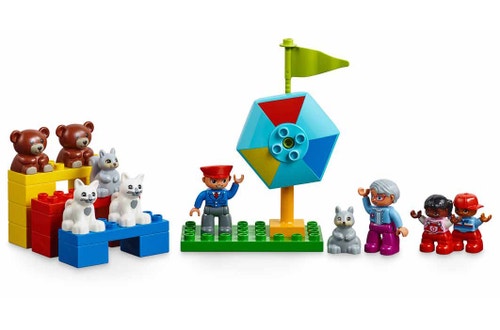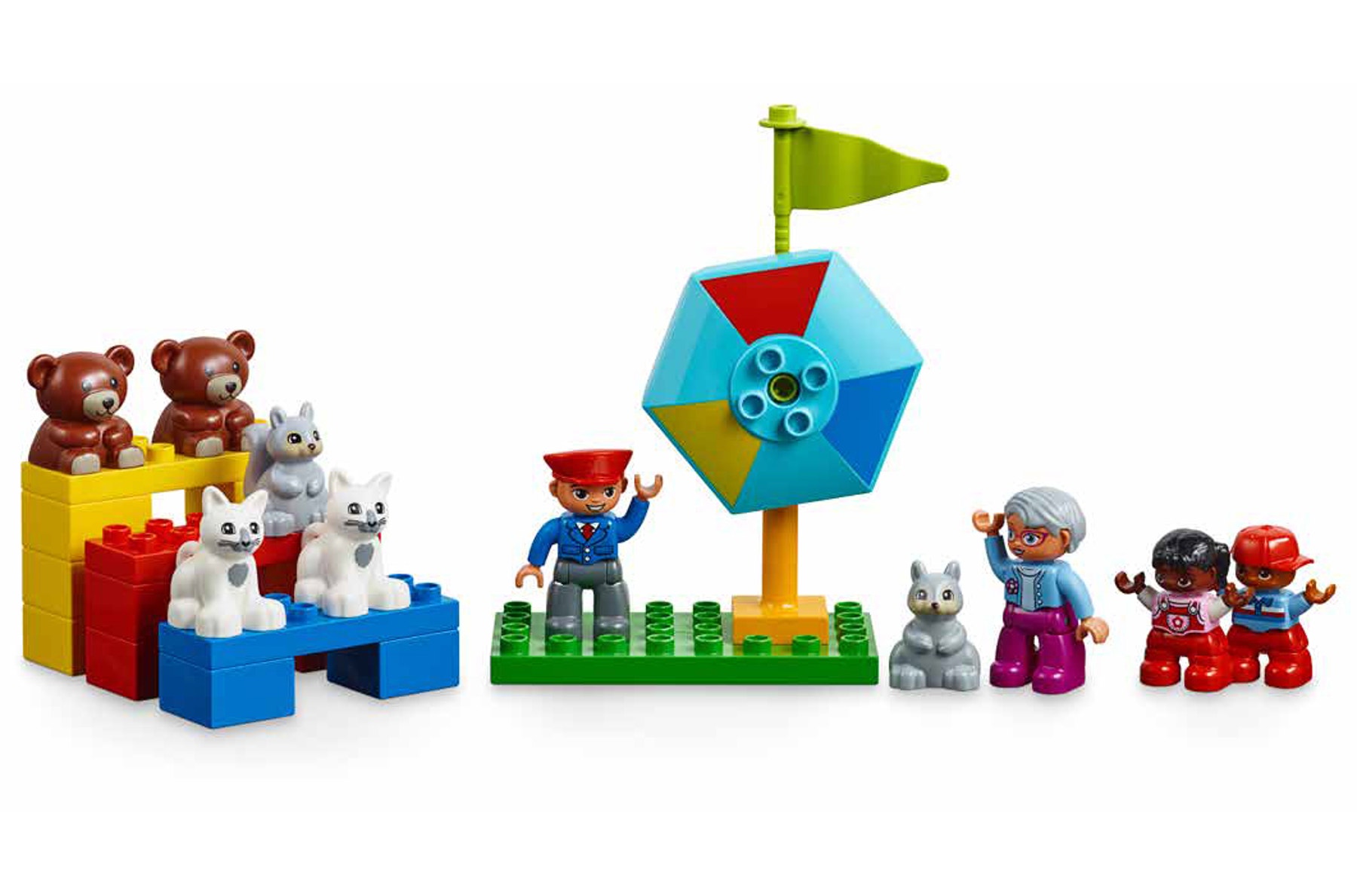Probability
In this lesson, students will learn about probability, making predictions, and recording data.

Prepare
Review this lesson plan and choose what you need from the Teacher Support box.
If necessary, pre-teach these related vocabulary words: predict, probability.
Consider the abilities and backgrounds of all your students and decide when and how to introduce and differentiate lesson content, activities, or concepts.
The Math Behind the Play: Probability is a measure of how often a particular event will happen if something is done repeatedly. For example, the probability of a coin coming up heads is 1 out of 2.
See the Weather unit in STEAM Park Additional Lesson Plans for another use of this lesson.
Connect
Play a guessing game with the students. Tell them that you are thinking of a color, then ask them to guess which color you are thinking of.
Consider giving clues, such as for the color red:
- It’s the color of a round fruit.
- It’s the color of a fire engine.
When the students have guessed the color, ask how they figured it out. Explain that the more clues you have, the easier it is to guess the correct answer.
Select a red, yellow, and blue brick from the set and place them in front of you. Tell the students that you are thinking of one of the three colors and ask them to guess which color it is.
When they have guessed the correct answer, ask them if it was easier or harder to guess the correct color in this game compared to the last game.
Explain that in this game, they only had three colors they could guess. However, there were no clues given.
Tell the students that you are going to read the beginning of a story about a group of people who are visiting STEAM Park. You can show them the inspiration photo or use the figures to act out the scene.

- Read the following story aloud:
Arty and Teresa were visiting STEAM Park with Arty’s grandma, Ms. Engels. They saw their friend Parker, the park manager, operating the Spin to Win game.
“Step right up and spin to win! Which color do you think the wheel will land on?” Parker asked.
“I think it’ll land on red because red is my favorite color!” Arty said.
“I think it’ll land on turquoise because there are three turquoise spaces and only one red space, one yellow space, and one blue space,” Teresa said.
“Ms. Engels, will you give the wheel a spin?” Parker asked.
Ms. Engels stepped up and spun the wheel with all of her strength.
Everyone watched as the wheel went round and round many times. It slowed down and ended up on the red space.
“Yes! Red is the best!” Arty cheered.
“Choose your prize from the red shelf!” Parker said.
Construct
Ask students to look at the in-box building inspiration card of the wheel model and build it. Alternatively, show them the wheel model on the inspiration card (see Connect). Tell them that they will play a game using the wheel.
Once the wheel is built, show the students that the flag at the top is the pointer, and ask them which color they think the wheel will land on if someone spins it.
Explain that this is a game of chance and that no one knows for certain where the wheel will stop.
Tell the students that they can try to predict where the wheel will stop by judging the power of the spin and the distance around the wheel, but that it is not possible to make a good prediction.
Give each of the students one of the results graphs and ask them to take turns spinning the wheel and guessing which color the wheel will land on. After each spin, tell the students to place a mark in the box next to the color the wheel landed on.
Contemplate
After spinning the wheel several times, ask the students to look at their graphs and count how many times the wheel landed on each color.
Consider asking questions like:
- Which color do you predict it will land on next?
- If you spin the wheel three times, how many times do you predict it will land on turquoise? Why?
Explain that there are more turquoise spaces on the wheel than other colors and that this means there is a better chance or probability that the wheel will land on a turquoise space instead of one of the other colors.
Continue
Tell the students that they will be using the wheel to play another game.
Explain that they will take turns spinning the wheel and that each time the spinner lands on a color, everyone will choose a brick or an element that is that color.
Tell them that the wheel will be spun five times and at the end, they will try to build a prize using the bricks they choose.
Did you notice?
- Ask guiding questions to elicit students’ thinking and their decisions while ideating and building: What do you wonder about…? What do you notice…?
Observation Checklist
Review the learning objectives and success criteria addressed in this lesson (Teacher Support box).
Use the following checklist to observe students’ progress:
- Their investigation plan includes a way to make observations and collect the data about which color the spinner lands on.
- Students can make predictions about which color they expect to be landed on the most.
- Students can count the marks they make in their graphs to find out how many times it landed on each color.
- Students can discuss which color group was landed on more than the others.
Teacher Support
Students will:
- Practice making predictions
- Record data using graphs or charts
Crayons or colored pencils
CCSS.MATH.CONTENT.K.MD.B.3 Classify objects into given categories; count the numbers of objects in each category and sort the categories by count.
Extension:
CCSS.MATH.CONTENT.K.CC.C.6 Identify whether the number of objects in one group is greater than, less than, or equal to the number of objects in another group, e.g., by using matching and counting strategies.




